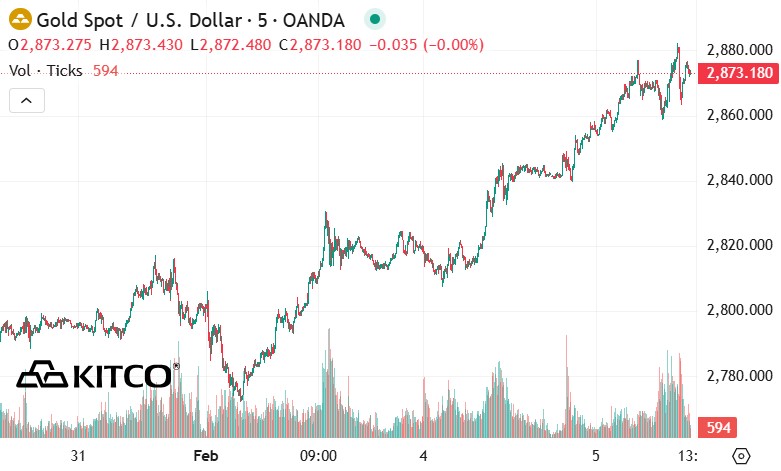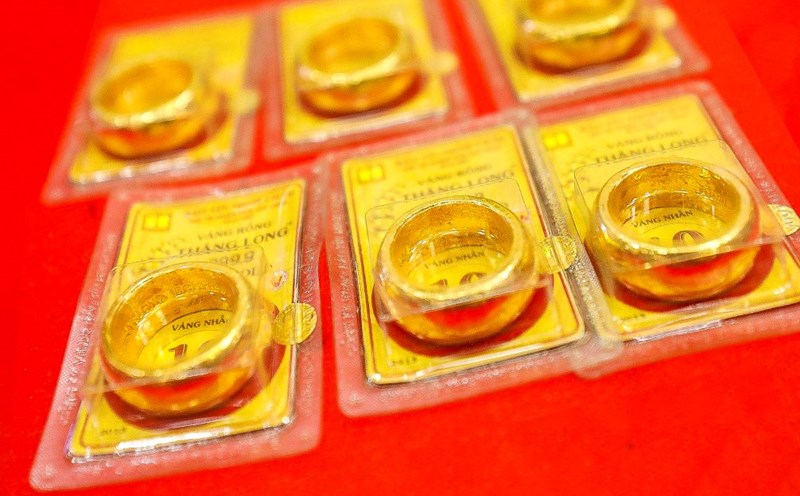Investors turn to gold as a safe haven asset
Rising US Treasury yields and trade war risks are combining to create a stagflationary environment, driving investors to gold as a safe haven, said Kelvin Wong, senior market analyst at OANDA, in a note published Wednesday morning.
“The US dollar index has been moving sideways for the past three weeks since hitting a 52-week high of 110.18 on January 13, which has been positive for gold. Gold broke a two-month sideways trend on January 21 and surged 4.4% to hit an intraday record high of $2,865 at press time,” Wong wrote.

Wong noted that US President Donald Trump launched “Trade War 2.0” on Saturday by imposing wide-ranging tariffs on imports from Canada, Mexico and China.
“Although the 25% tariffs on Canada and Mexico have been postponed for a month, the 10% tariffs on Chinese goods have officially taken effect, prompting Chinese policymakers to respond with tariffs of 10% to 15% on US energy and agricultural exports to China, scheduled to take effect next Monday, February 10,” he said.
“In addition, China has also planned to disrupt the US supply chain of critical minerals and restrict the operations of US companies in the mainland. Google has been accused of violating antitrust laws, while China has issued new export controls on tungsten and other critical minerals used in electronics, aerospace and defense,” Wong added.
“Therefore, countries with significant trade surpluses with the US are at risk of becoming targets of Trump's tariff policy, including the European Union, Japan, South Korea and exporting countries that depend on ASEAN,” the expert said.
Wong said that if negotiations between the US and affected countries fail to reach an agreement, “retaliatory measures could escalate, disrupting global trade, thereby restraining economic growth and pushing up inflationary pressures.”
These pressures have already begun to show in government bond yields. “Market instruments have already reflected expectations of continued rising US inflation, based on the evolution of the 5-year and 10-year breakeven inflation rates, which have been trending upward since the US Federal Reserve (FED) began its rate-cutting cycle in September 2024.
As of February 4, 2025, both the 5-year and 10-year breakeven inflation rates have broken out of their two-year consolidation zone, reaching 2.59% and 2.44%, respectively, exceeding the Fed’s long-term inflation target of 2%. The above data shows that the risk of stagflation is increasing,” the expert commented.
Technical outlook continues to favor the uptrend
Kelvin Wong said the technical outlook for spot gold remains bullish in the medium to long term.
“The daily RSI momentum indicator has reached overbought territory, but has not yet shown a bearish divergence signal, suggesting that gold (XAU/USD) could correct slightly after the recent strong rally rather than reversing to the downside in the medium term. Watch the key support at $2,716/oz (which is also the 50-day moving average), while the next resistance levels are at $2,933/oz and the $3,033-$3,084/oz zone,” he said.
“Conversely, if gold breaks below $2,716/oz, the bullish scenario will be invalidated, opening the possibility of a downside correction in the coming weeks within the long-term uptrend, with the next support at $2,537/oz (200-day moving average),” Wong concluded.











